The Book that Made Me Read online
Table of Contents
Cover
Blurb
Logo
Foreword by Judith Ridge
A Feverish Desire to Possess by Randa Abdel-Fattah
Twelve Reasons by Markus Zusak
A Short Leap by Cathy Cassidy
“What Happens Next?” by Will Kostakis
The Great Sense of Unease by Mandy Hager
Hooked (and a Bit Unsettled) by Shaun Tan
Thwack! by Fiona Wood
Becoming Human by Bernard Beckett
Looking Where I’m Standing by Felicity Castagna
This World is More Than What Can Be Seen by Ambelin Kwaymullina
What the Doctor Recommended by Queenie Chan
Of Magic and Memory by Kate Constable
The Big Scooby-Doo Reveal by Rachael Craw
Sweet Dreams and Social Fails by Simmone Howell
Every Disgusting Detail by Benjamin Law
Challenging the Machinations of Racism by Jared Thomas
Invested with Enchantment by Alison Croggon
It Looks Like a Comic by Mal Peet
My First Reader by Ursula Dubosarsky
In Folded Arms by Cath Crowley
What Would Edith Do? by Emily Maguire
Putting the World to Rights by Catherine Mayo
Beyond the Influence by Ted Dawe
A Sense of Resolution by Simon French
Only White People Lived in Books by Catherine Johnson
Set My Senses Alight by Sue Lawson
Happy Endings by Brigid Lowry
You’ll Go Blind: A Cautionary Tale about the Power of Reading by Julia Lawrinson
Ingenious Decisions by Sue McPherson
James Remembering by James Roy
Seeing Red by Jaclyn Moriarty
About the Authors
About the Indigenous Literacy Foundation
Books Mentioned in the Collection
Writers Mentioned in the Collection
Acknowledgements
Copyright
Credits
Dedication
The Book That Made Me is a celebration of the books that influenced some of the most acclaimed authors from Australia and the world. Edited by Judith Ridge, it features non-fiction stories from 32 inspiring and award-winning authors including Markus Zusak, Jaclyn Moriarty, Shaun Tan, Mal Peet, Ambelin Kwaymullina, Simon French, Alison Croggon, Fiona Wood, Bernard Beckett, Ursula Dubosarsky, Rachael Craw, Sue Lawson, Benjamin Law, Cath Crowley, Kate Constable, James Roy, Will Kostakis, Randa Abdel-Fattah and many more. Royalties from the sale of the book will go to the Indigenous Literacy Foundation (ILF).
Foreword
Growing up, reading was my first and best thing. I don’t remember not being able to read – I was one of those precocious children who was reading before school, reading novels (Enid Blyton’s Adventures of the Wishing-Chair, to be precise) by the time I was in Year Two. For some people, reading is difficult – for me, it was like osmosis. I just seemed to absorb it into my way of being in the world as soon as was humanly, and cognitively, possible. Any time my family couldn’t find me – skiving off from the washing up, or just disappeared for hours – they knew that wherever they’d find me, in the loo or up a tree, I’d have a book with me.
For me it was almost always fiction (when it wasn’t Archie comics and Pink magazine – an English girls’ magazine that published comic strips and pre-teen-suitable romance stories side by side with profiles of such top ’70s pop stars as the Bay City Rollers, Paper Lace and The Rubettes. Google them and thank me later). I probably read five or six books a week as a kid, often re-reading old favourites multiple times, while falling for new delights borrowed from the school or local library. (Thanks, Auburn Council in Sydney’s west – you had the best collection an obsessive reader could have asked for.)
Later in life, though, I’ve come to equally enjoy memoir – stories of people’s lives. Not autobiography, strictly speaking, but slices of lives, and especially when they are the memoirs of writers. Writers’ memoirs, at their best, provide not merely insights into their childhoods, or romances, or whatever significant moments in their lives they choose to focus on, but often, indeed, almost always, they are meditations on creativity, and the role books and reading have played in the memoirist’s life. Memoirs such as Jeanette Winterson’s Why Be Happy When You Could Be Normal ? go so far as to suggest that books, and reading, can not only make a life, they can save it.
This growing fascination with writers’ reading lives led me to the creation of this book. I didn’t know much about writers when I was a young reader. Apart from a few big names like Enid Blyton, or Ethel Turner, who wrote my beloved Seven Little Australians and whose grandchildren holidayed at the same beach we did, authors were simply names on books. Now, of course, writers are celebrities, and their readers often have opportunities to meet them. But still, I wondered, how great would it be for today’s young readers to catch a glimpse into the books that helped build the writers they love? Thinking about the writers I knew and loved, I wondered, what was the book that made them – the book that made them fall in love, or made them understand something for the first time? Made them think. Made them laugh. Made them angry. Made them feel safe. Made them feel challenged in ways they never knew they could be, emotionally, intellectually, politically. Made them readers, made them writers – made them the person they are today? And so I asked them. The book you hold in your hands is the result.
As you’ll see when you start dipping into the essays, poems, memoir and other pieces in this collection, there’s a fascinating variety of stories told by people who ended up making words and stories their living (and perhaps their life). Some of the books that “made” them were encountered when they were very small children – see Ursula Dubosarsky’s charming verse account of her kindergarten readers. Some were primary-school aged (as with my own story, recounted below, and James Roy’s tribute to the Australian classic children’s novel Josh). Most, though, were in their teens and ready, as Emily Maguire so perfectly says in her essay about Frank Moorhouse’s novel Grand Days, for something to smash and explode their mind and their world wide open.
Some of the books you’ll read about were in fact comics; some were magazines (stolen, as in Benjamin Law’s hilariously cheeky account, from an older sister). Some weren’t in paper form at all, but were stories passed down through family and culture – Ambelin Kwaymullina for one reminds us of the source of all story, from the oral traditions of our ancestors, wherever we, or they, came from.
Whatever their form, and whatever the age the reader was when they were read, they were all books, stories, experiences that one way or another changed the reader. For good.
For myself, the book that made me the kind of reader I am and, I suspect, played no small part in my decision to make a life trying to get inside books and figure out how they work, was the first book I ever read that challenged me on an intellectual and, for want of a better word, creative level.
The book was The Flame Takers, a novel by the Australian author Lilith Norman. It was published in 1973, and I would have read it that year or a year or two, at most, later. I knew Norman’s work well – I’d been reading her for years in the New South Wales The School Magazine, where she worked on the editorial staff. I’d also read all of her previous novels, all more or less in the realist mode, about recognisably real children in recognisably real places and situations. Her best-known book at the time was probably Climb a Lonely Hill, about children stranded in the desert after a car accident. (Surviving the Australian environment was a favourite theme of children’s writers of the 1960s and ’70s.)
The Flame Takers, though, was something else.
The protagon
ists are still very real – young teenage brother and sister Mark and Joanna Malory, in their early years of high school at Sydney Boys and Girls High respectively (Norman was a proud alumna of Sydney Girls High School). The narrative begins as Mark’s story – he’s a gifted musician, the son of theatrical parents and grandparents, all of whose creative talents slowly start being drained away by some unknown, mysterious force. Audaciously, about a third of the way into the novel, Norman switches our attention from Mark to Joanna, the blessedly (so Joanna herself says) untalented member of the family, who is the one left to find the cause of her family’s “flames” – their creativity – being lost.
The Flame Takers was the first book I found difficult, whose meaning was slippery and opaque, whose language and story spiralled around me like elusive, elliptical phantoms. It was the first book I remember where the story didn’t immediately present itself to me, but where I had to enter into the book in all its strangeness and make my own sense, make my own meaning. It was the book that introduced me to the intense pleasures of entering deep within the very bones of a story and working out its secrets from the inside out.
And while I may have ended up here anyway, I can’t help but think it was The Flame Takers that determined my life’s path as a student of literature, which led me in time to work as an editor – for many years at The School Magazine, following in Lilith Norman’s remarkable footsteps – and then in another turn, a teacher of creative writing. Along the way, I’ve come to know and admire a lot of writers – many of whom are represented in the pages of this book.
We hope that you may find inspiration and challenges to extend and expand your own reading life from the many amazing books written about – and written by – the contributors to The Book that Made Me. We’ve provided a handy list at the back for you, along with information about all the contributors (and a sneak peek at their past selves!).
Finally, because everyone involved in this book believes so deeply and determinedly in both the need and the right for every child to have access to the highest standards of literacy skills possible, so that they, too, can be made (and undone!) by books, all author and anthologists, royalties of The Book that Made Me will go to the Indigenous Literacy Foundation (ILF). The Foundation sends books into Aboriginal and Torres Strait Islander communities – schools and homes – and supports young Indigenous readers by providing books in both Aboriginal (First) languages and English.
Thank you for supporting us support the ILF, and now, may we present a book that we hope, one way or another, might just also be the making of you.
Judith Ridge
A Feverish Desire to Possess
Randa Abdel-Fattah
I have vivid memories of spending Saturdays with my mother and sister, moving from one wholesale bookseller to another in the suburbs of Melbourne in the eighties and early nineties. My mother, a senior teacher and administrator at Australia’s first Islamic school, was tasked with building the school’s emerging library. As she browsed each warehouse I would pore over the books lining the shelves in the children’s section: The Sweet Dreams series, Sweet Valley High, The Baby-Sitters Club, Nancy Drew, Judy Blume, Robin Klein, RL Stine, Christopher Pike, Caroline B Cooney. My bedroom walls were lined with photocopies I’d made of the covers of The Baby-Sitters Club (alongside my Kylie Minogue and Michael Jackson posters).
Almost every second Sunday my father would take me to the Caribbean Gardens & Markets in the suburb of Scoresby to visit a particular second-hand bookseller who stocked the Sweet Valley High series. I remember the long drive down Spring Valley Road, the anticipation building inside me. What books would I find this weekend? Would I come closer to completing my collection?
The Sweet Valley High series was set in California and offered readers stories about love, friendship, proms, jocks, sibling rivalry and romance. Girls with names like Jessica and Elizabeth fell for boys with names like Todd, Paul, Bruce and Michael – boys who had “sandy hair and piercing blue eyes”, and were either the “rich boy next door” or a sports coach at a summer camp.
The stories I read filled me with a feverish desire to possess them. I wanted so badly to be part of these books – as their reader, as their writer. The only way of assuaging this desire was to write my own stories. And so I did. My father made me a writing desk and I threw myself into storytelling. The stories I wrote were all set in America, focusing on scandalous love triangles, sorority and fraternity clubs, tragic tales of running away from home, chaos at school camps, proms, snow fights during school. My characters ate ham and cheese sandwiches and snacked on “Twinkies”, even though I had no idea what a Twinkie was (this was pre-Google days after all). Their names were invariably Lisa, Samantha, Liz or Kylie. They always had blonde hair, blue eyes and milky white skin. The cliché machine was working overtime.
Why should all of this be so strange?
Because I’m an Australian-born Muslim of Palestinian Egyptian heritage with an unpronounceable surname (the phlegm inflection is necessary), curly dark hair (blow-dried and tamed now but electric power point out-of-control as a kid and teenager), who spent Saturday mornings at Arabic school among boys called Mohamed and Ahmed and girls called Fatma and Aisha. During the week, I attended a Catholic primary school. It was located in Bulleen, Melbourne, and many of the students were of European extraction, so the boys I spent hours writing “Dear Diary” entries over had names like Nicholas Papadopolous and Eddie Bonnachi. My school was filled with eucalyptus trees, tanbark and creepy-crawlies; we had water fights, not snow fights, and we bought our lunch from the tuckshop, not a cafeteria.
Much like the teenage fiction I grew up with, my Arab and Muslim identity is invisible in my early writing. Although my life offered a potential rich tapestry of racial tropes and ethnic fetishisms – the stock-standard roles of cab driver, convenience store owner, terrorist or tyrant, oppressed Muslim woman – I couldn’t manage to exploit them for the purposes of telling a good yarn. To think I could have written the habib version of Sweet Valley High, set in Bankstown, Sydney, featuring twins Fatima and Jamilah. Sadly, my characters’ names were all pronounceable, everybody’s hair was Brylcreem-free and lunch consisted of sliced white bread, not kebab leftovers that stank out the locker room. (Oh Mum, what were you thinking?)
The absence of diversity in the popular fiction I grew up with was, I believe, symptomatic of a collective imagination that equates mainstream with Anglo, and which casts indigenous people, minorities and migrants as exotic, fascinating deviations from the norm.
The only exception to this that I can recall from the childhood books I read is Claudia Kishi in The Baby-Sitters Club. Subverting stereotypes, Claudia is Japanese-American and – wait for it – not academically inclined! Claudia was perhaps one of the first encounters I had with a non-Anglo character who did not reinforce popular stereotypes. While this was perhaps not a particularly sophisticated example of anti-racism politics, it should be credited as insightful given the time and context.
And then, against this backdrop of Anglo-centric fiction, came along a book that turned my life upside down. Aged thirteen, my “coming of age” coincided with a particularly difficult time for my minority community: the first Gulf War which began in 1990. Australia, supporting the US, deployed warships to the Gulf. In the public imagination, Arab-Australians and Muslims were suddenly cast as the archetypal folk devils, made to feel like outsiders and suspicious Others because of events overseas over which they had no control. It was assumed that all Arabs and Muslims in Australia supported Saddam Hussein and that their loyalty to Australia was therefore in doubt. Media representations insisted on representing Muslims and Arabs in homogenous, monolithic terms, associating Islam with violence, fanaticism and fundamentalism. I felt this personally. Identified as a Muslim by the hijab I wore, I was called a wog, terrorist, nappy-head, camel jockey and sand nigger. My faith and identity were the subject of interrogation and discipline. I was spat at on the street and told to “go back home”
. (Postcode 3109, morons, I would yell back.) When you’re thirteen and feel as though you’re locked up in a cage of other people’s demonising rhetoric, totalising assumptions and crude stereotypes, your already precarious sense of identity and belonging threatens to unravel. You are made to walk the plank – a plank hitched up by people who politicise your very existence at a time when you simply want to get on with the business of being a teenager and worry about acne and schoolgirl crushes and big dreams and fierce friendships.
I poured myself into books, searching for escapism. I did not dare to hope for validation, a cultural point of reference that spoke to me, and all the identity hyphens I straddled.
And then I read Melina Marchetta’s Looking for Alibrandi.
There are books you read that make you hold your breath. It’s only when you get to the end that you realise you need to come up for air. In fact, the origins of the word “inspiration” stem from the act of inhaling. There is something sensuous and visceral in the experience of being inspired. I felt it with Looking for Alibrandi.
I read it in one sitting. And then I read it again. And again. Something inside me changed.
For the very first time in my own life, there was a book that didn’t fetishise a migrant upbringing. Josie wasn’t somebody to pity or consider “exotic”. I identified with her world, the pressures and challenges of straddling what I considered at that age to be identities in competition with each other. I loved Josie’s gutsiness, her insistence on making up her own mind about sex and not giving in to peer pressure. I loved her loud, vibrant, complicated family, and the fact that her experiences with racism vindicated my own. Even the cover appealed to me. Defying the quintessential blonde and blue-eyed Aussie girl, this girl had long, dark, curly hair and olive skin. Believe me this was no small matter. I regularly placed my head on the ironing board and allowed my friends to iron my hair (risking scalp burns and singed locks) in a perennial effort to attain smooth hair. Sun In (a spray-in hair lightener) was also a popular choice among my friends at the time and allowed one to circumvent the parental prohibition against hair dye by spraying the hair to lighten it (my hijab served more than just a spiritual function; it also allowed me to conceal evidence). Here was Josie with curly hair and not an iron or Sun In spray bottle to be seen.

 Astounding Stories, March, 1931
Astounding Stories, March, 1931 Astounding Stories, February, 1931
Astounding Stories, February, 1931 Futuria Fantasia, Spring 1940
Futuria Fantasia, Spring 1940 The King's Daughter and Other Stories for Girls
The King's Daughter and Other Stories for Girls Uncanny Tales
Uncanny Tales Masters of Noir: Volume Two
Masters of Noir: Volume Two Witty Pieces by Witty People
Witty Pieces by Witty People Sylvaneth
Sylvaneth Space Wolves
Space Wolves Hammerhal & Other Stories
Hammerhal & Other Stories The Fantasy Fan, March, 1934
The Fantasy Fan, March, 1934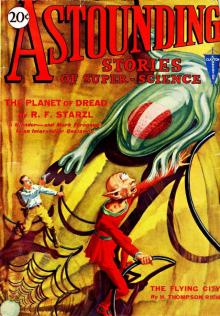 Astounding Stories of Super-Science, August 1930
Astounding Stories of Super-Science, August 1930 Astounding Stories, August, 1931
Astounding Stories, August, 1931 The Burden of Loyalty
The Burden of Loyalty Return to Wonderland
Return to Wonderland Anthology - A Thousand Doors
Anthology - A Thousand Doors The Fantasy Fan, October 1933
The Fantasy Fan, October 1933 Astounding Stories, June, 1931
Astounding Stories, June, 1931 Southern Stories
Southern Stories Astounding Stories of Super-Science, May, 1930
Astounding Stories of Super-Science, May, 1930 The Fantasy Fan December 1933
The Fantasy Fan December 1933 Adventures in Many Lands
Adventures in Many Lands The Fantasy Fan February 1934
The Fantasy Fan February 1934 The Fantasy Fan November 1933
The Fantasy Fan November 1933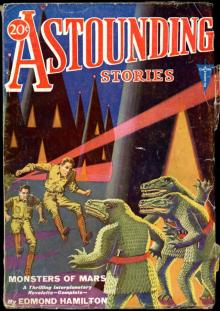 Astounding Stories, April, 1931
Astounding Stories, April, 1931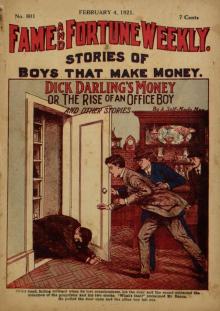 Fame and Fortune Weekly, No. 801, February 4, 1921
Fame and Fortune Weekly, No. 801, February 4, 1921 Astounding Stories of Super-Science, November, 1930
Astounding Stories of Super-Science, November, 1930 Astounding Stories of Super-Science January 1931
Astounding Stories of Super-Science January 1931 A Monk of Fife
A Monk of Fife Astounding Stories of Super-Science September 1930
Astounding Stories of Super-Science September 1930 Astounding Stories of Super-Science July 1930
Astounding Stories of Super-Science July 1930 Astounding Stories of Super-Science, June, 1930
Astounding Stories of Super-Science, June, 1930 Astounding Stories of Super-Science, October, 1930
Astounding Stories of Super-Science, October, 1930 Astounding Stories of Super-Science, March 1930
Astounding Stories of Super-Science, March 1930 The Fantasy Fan January 1934
The Fantasy Fan January 1934 The Fantasy Fan September 1933
The Fantasy Fan September 1933 Astounding Stories of Super-Science February 1930
Astounding Stories of Super-Science February 1930 Astounding Stories, May, 1931
Astounding Stories, May, 1931 Strange Stories of Colonial Days
Strange Stories of Colonial Days Golden Age of Science Fiction Vol IX
Golden Age of Science Fiction Vol IX Astounding Stories of Super-Science, December 1930
Astounding Stories of Super-Science, December 1930 Evolutions: Essential Tales of the Halo Universe
Evolutions: Essential Tales of the Halo Universe Good Stories Reprinted from the Ladies' Home Journal of Philadelphia
Good Stories Reprinted from the Ladies' Home Journal of Philadelphia Dragons!
Dragons!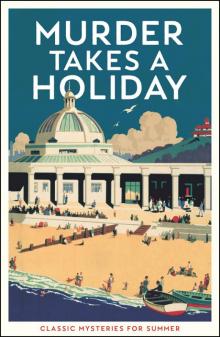 Murder Takes a Holiday
Murder Takes a Holiday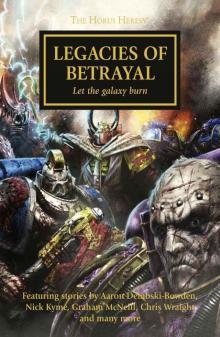 Legacies of Betrayal
Legacies of Betrayal STAR WARS: TALES FROM THE CLONE WARS
STAR WARS: TALES FROM THE CLONE WARS Strange New Worlds 2016
Strange New Worlds 2016 Lippincott's Magazine, August, 1885
Lippincott's Magazine, August, 1885 Golden Age of Science Fiction Vol X
Golden Age of Science Fiction Vol X Hot Stuff
Hot Stuff Santa Wore Spurs
Santa Wore Spurs Paranormal Erotica
Paranormal Erotica Tangled Hearts: A Menage Collection
Tangled Hearts: A Menage Collection Sweet Tea and Jesus Shoes
Sweet Tea and Jesus Shoes The Journey Prize Stories 25
The Journey Prize Stories 25 Wild Western Tales 2: 101 Classic Western Stories Vol. 2 (Civitas Library Classics)
Wild Western Tales 2: 101 Classic Western Stories Vol. 2 (Civitas Library Classics) (5/15) The Golden Age of Science Fiction Volume V: An Anthology of 50 Short Stories
(5/15) The Golden Age of Science Fiction Volume V: An Anthology of 50 Short Stories (4/15) The Golden Age of Science Fiction Volume IV: An Anthology of 50 Short Stories
(4/15) The Golden Age of Science Fiction Volume IV: An Anthology of 50 Short Stories Ten Journeys
Ten Journeys The Boss
The Boss The Penguin Book of French Poetry
The Penguin Book of French Poetry Golden Age of Science Fiction Vol VIII
Golden Age of Science Fiction Vol VIII His Cinderella Housekeeper 3-in-1
His Cinderella Housekeeper 3-in-1 The Magazine of Fantasy & Science Fiction - July/August 2016
The Magazine of Fantasy & Science Fiction - July/August 2016 PYRATE CTHULHU - Tales of the Cthulhu Mythos (vol.2)
PYRATE CTHULHU - Tales of the Cthulhu Mythos (vol.2) Tales from a Master's Notebook
Tales from a Master's Notebook April 1930
April 1930 New Erotica 6
New Erotica 6 Damocles
Damocles The Longest Night Vol. 1
The Longest Night Vol. 1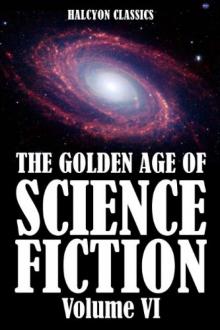 The Golden Age of Science Fiction Volume VI: An Anthology of 50 Short Stories
The Golden Age of Science Fiction Volume VI: An Anthology of 50 Short Stories (1/15) The Golden Age of Science Fiction: An Anthology of 50 Short Stories
(1/15) The Golden Age of Science Fiction: An Anthology of 50 Short Stories Eye of Terra
Eye of Terra ONCE UPON A REGENCY CHRISTMAS
ONCE UPON A REGENCY CHRISTMAS Nexus Confessions
Nexus Confessions Passionate Kisses
Passionate Kisses War Without End
War Without End Doctor Who: Time Lord Fairy Tales
Doctor Who: Time Lord Fairy Tales Gotrek and Felix: The Anthology
Gotrek and Felix: The Anthology WESTERN CHRISTMAS PROPOSALS
WESTERN CHRISTMAS PROPOSALS The Journey Prize Stories 27
The Journey Prize Stories 27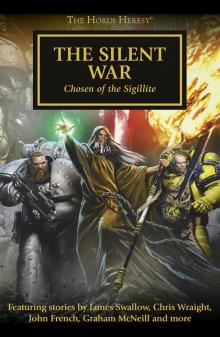 The Silent War
The Silent War Liaisons
Liaisons Ellora's Cavemen: Tales from the Temple IV
Ellora's Cavemen: Tales from the Temple IV Ellora's Cavemen: Tales from the Temple II
Ellora's Cavemen: Tales from the Temple II Some of the Best From Tor.com, 2013 Edition: A Tor.Com Original
Some of the Best From Tor.com, 2013 Edition: A Tor.Com Original Urban Occult
Urban Occult Fractures
Fractures The Stories: Five Years of Original Fiction on Tor.com
The Stories: Five Years of Original Fiction on Tor.com The Penguin Book of Modern British Short Stories
The Penguin Book of Modern British Short Stories Mortarch of Night
Mortarch of Night The Portable Nineteenth-Century African American Women Writers
The Portable Nineteenth-Century African American Women Writers The Golden Age of Science Fiction Volume VII: An Anthology of 50 Short Stories
The Golden Age of Science Fiction Volume VII: An Anthology of 50 Short Stories Holy Bible: King James Version, The
Holy Bible: King James Version, The Eight Rooms
Eight Rooms sanguineangels
sanguineangels DarkNightsWithaBillionaireBundle
DarkNightsWithaBillionaireBundle Casserole Diplomacy and Other Stories
Casserole Diplomacy and Other Stories How I Survived My Summer Vacation
How I Survived My Summer Vacation Alfred Hitchcock Presents: 16 Skeletons From My Closet
Alfred Hitchcock Presents: 16 Skeletons From My Closet Lords, Ladies, Butlers and Maids
Lords, Ladies, Butlers and Maids The B4 Leg
The B4 Leg Ellora's Cavemen: Tales from the Temple I
Ellora's Cavemen: Tales from the Temple I 2014 Campbellian Anthology
2014 Campbellian Anthology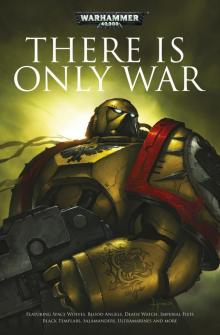 There Is Only War
There Is Only War Obsidian Alliances
Obsidian Alliances 12 Gifts for Christmas
12 Gifts for Christmas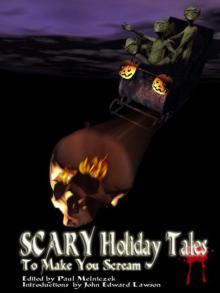 Scary Holiday Tales to Make You Scream
Scary Holiday Tales to Make You Scream 25 For 25
25 For 25 The Plagues of Orath
The Plagues of Orath And Then He Kissed Me
And Then He Kissed Me Star Trek - Gateways 7 - WHAT LAY BEYOND
Star Trek - Gateways 7 - WHAT LAY BEYOND Laugh Your Head Off Again and Again
Laugh Your Head Off Again and Again The Balfour Legacy
The Balfour Legacy Golden Age of Science Fiction Vol XI
Golden Age of Science Fiction Vol XI (3/15) The Golden Age of Science Fiction Volume III: An Anthology of 50 Short Stories
(3/15) The Golden Age of Science Fiction Volume III: An Anthology of 50 Short Stories Shas'o
Shas'o Astounding Science Fiction Stories: An Anthology of 350 Scifi Stories Volume 2 (Halcyon Classics)
Astounding Science Fiction Stories: An Anthology of 350 Scifi Stories Volume 2 (Halcyon Classics) Twists in Time
Twists in Time Meduson
Meduson The Magazine of Fantasy & Science Fiction - August 1980
The Magazine of Fantasy & Science Fiction - August 1980 The Journey Prize Stories 22
The Journey Prize Stories 22 The Book that Made Me
The Book that Made Me Angels of Death Anthology
Angels of Death Anthology Ask the Bones
Ask the Bones Emergence
Emergence Beware the Little White Rabbit
Beware the Little White Rabbit Xcite Delights Book 1
Xcite Delights Book 1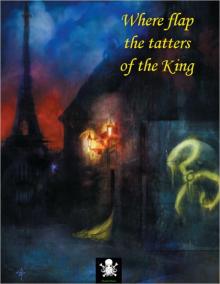 Where flap the tatters of the King
Where flap the tatters of the King The Journey Prize Stories 21
The Journey Prize Stories 21 Tales of the Slayer, Volume II
Tales of the Slayer, Volume II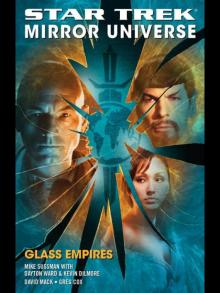 Glass Empires
Glass Empires Golden Age of Science Fiction Vol XII
Golden Age of Science Fiction Vol XII (2/15) The Golden Age of Science Fiction Volume II: An Anthology of 50 Short Stories
(2/15) The Golden Age of Science Fiction Volume II: An Anthology of 50 Short Stories Fairytale Collection
Fairytale Collection Angels!
Angels! Golden Age of Science Fiction Vol XIII
Golden Age of Science Fiction Vol XIII